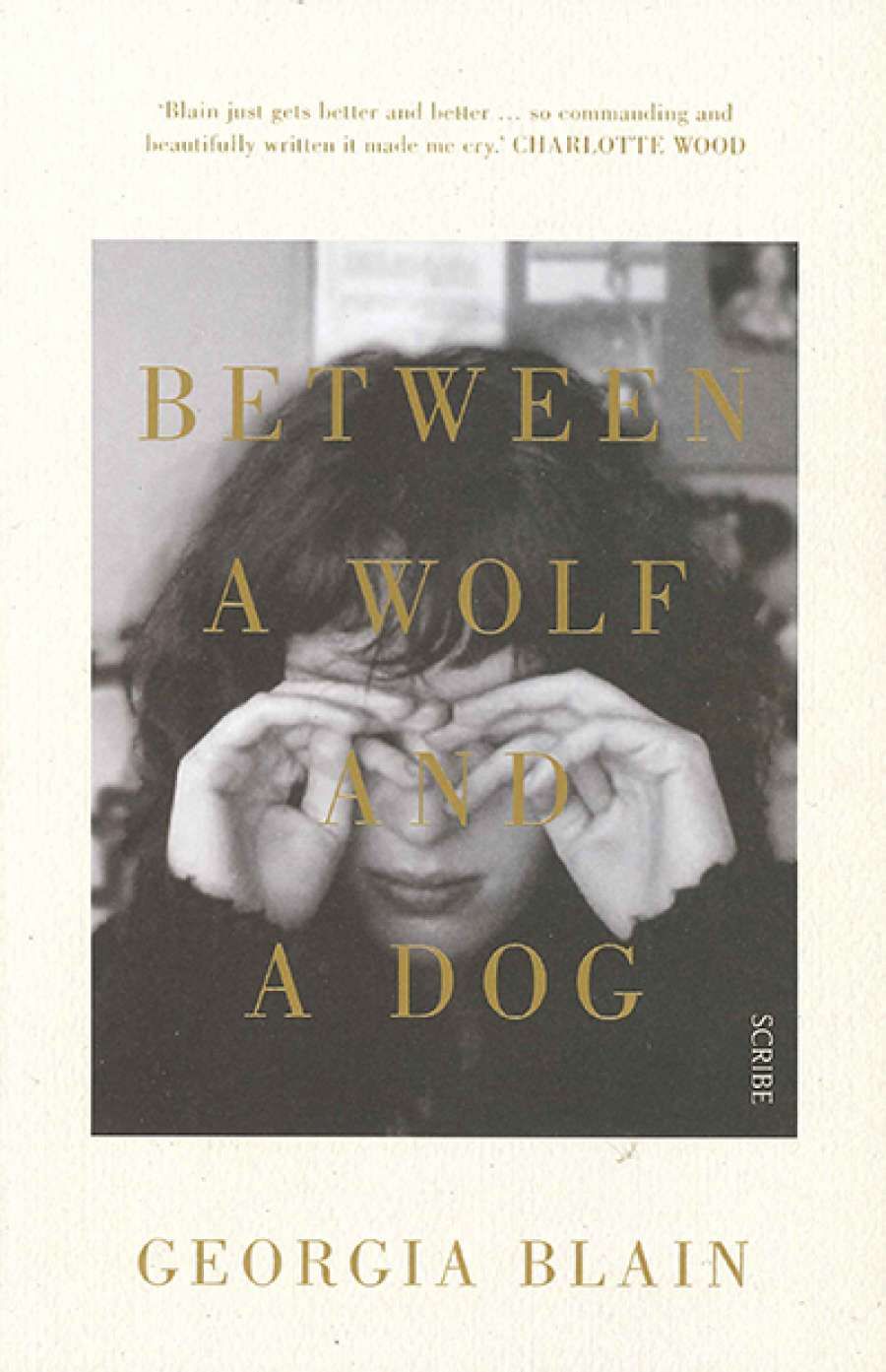
- Free Article: No
- Contents Category: Fiction
- Custom Article Title: Jo Case reviews 'Between a Wolf and a Dog' by Georgia Blain
- Book 1 Title: BETWEEN A WOLF AND A DOG
- Book 1 Biblio: Scribe $29.99 pb, 272 pp, 9781925321111
Between a Wolf and a Dog, told from the competing perspectives of four family members, some of them estranged, unfolds within the framework of one rain-soaked day in Sydney. One narrator is preparing for a significant post- divorce date, one is contemplating death, one is grappling with an overwhelming emptiness, and the other has been caught in a lie that threatens to ruin his life (for the second time). All of them alternate the lived details of their day with intricate reflection on their shared past, centring on a cataclysmic event three years earlier that has dictated where they are now. The twenty-four-hour timeframe, rotating perspective and thematic centrality of time – from the significance of the moment to the ever-present past – echoes Mrs Dalloway, in a way that seems conscious, if never literal.
Matriarch Hillary, a successful filmmaker, is approaching the end of her life: she has terminal cancer and is planning to end on her own terms before being overwhelmed by pain. We follow her step-by-step planning throughout the day, as she sources heroin, watches her last completed film, and has final conversations with her unsuspecting daughters Ester and April. 'It was an ordinary hour together', she thinks, after one such meeting. 'Which is as it should be.' This observation matches a comment from one of Ester's patients, berating himself after the death of his young daughter: 'He was blessed with an ordinary life. And he didn't even know.' The unanticipated significance of those ordinary details and moments runs throughout, along with the inevitability that we don't pay attention as they happen. It is only from the distance of time – and the context that brings – that they acquire meaning.
One way these moments are excavated and noticed is through art, as we see in Hillary's films, made 'from fragments' of footage, images, pictures, and archives, using it 'to tease out complexities'. Like Siri Hustvedt (What I Loved, The Blazing World) and Janette Turner Hospital (The Last Magician), Blain uses her character's fictional art as a theoretical tool within the novel, the voice of the artist standing in for that of the author. Ester's work as a counsellor is another tool: she works with her clients to weave key moments and threads of lived experience into a wider story, one that will ideally help them to decipher the past and plan the future. Ester's ex-husband Lawrence also assembles found details into an influential big picture, in a manufactured way, in his work as a poll analyst. 'There were so many responses that could be given at any moment, influenced by something as simple as having just heard a song that irritated the shit out of the person or eaten a delicious meal,' he reflects. His professional decision to tweak the numbers of his poll (in an attempt to exert some small power and control), without properly considering the consequences of being found out, mirrors the impulsive transgression that blew up his marriage three years earlier. 'He is a practised liar, a man who moulds the world around him into changing shapes to suit his need.'
 Georgia Blain
Georgia Blain
Blain is an unsentimental writer; there is a welcome edge to the fierce love these characters feel for one another, making both the relationships and characters palpably real. Hillary is almost angry at Ester for giving up her art in favour of practical domesticity and security, but she doesn't actually like what she creates. Neither Ester nor Lawrence wanted custody of their dog in their break-up: they share it with their daughters. The sibling intimacy between Ester and April, who are estranged throughout the novel, is typified by passionate opposing feelings of affection and resentment, from early childhood onwards.
A series of questions lurks at the heart of Between a Wolf and a Dog. What is a good life? How do you recognise a relationship that has expired, and how do you know when to keep working at it? How might we resolve the tension between what we want and what we should want? The puzzle of creativity is a vital thread, too: Blain interrogates the demands, sacrifices, and unreliable rewards of art through characters who fall on a broad spectrum between prioritising the practical and the creative, with various outcomes. As in the best art, none of these questions is definitively resolved, but the characters' journeys yield rich material.


Comments powered by CComment